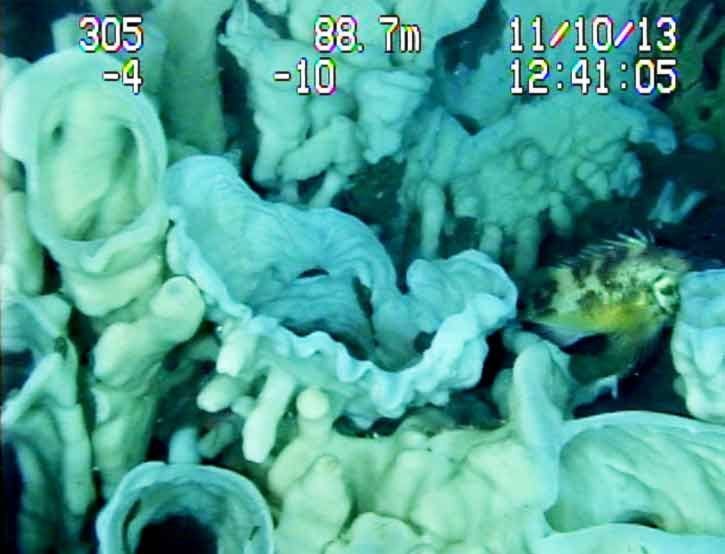A rare prehistoric glass sponge reef estimated to be nearly the same length as the stretch of highway between Prince Rupert to Port Edward was discovered in Chatham Sound two years ago and only now environmental groups are taking notice.
With all the proposed liquefied natural gas projects and research conducted for the environmental assessment reviews this was one discovery that went unnoticed — until now.
The information was available to the public after Spectra Energy submitted its application for the Westcoast Connector Gas Transmission Project in April 2014. The project plans to build an 850-kilometre pipeline that will deliver natural gas from northeastern B.C. to the proposed BG Canada LNG terminal on Ridley Island.
“You can imagine in more than 9,000 pages in the application there’s going to be a lot of scientific information of interest to various groups for various purposes beyond what we do,” said Rosemary Silva, external relations manager of Spectra Energy’s Canadian LNG business.
Canadian Parks and Wilderness Society (CPAWS) is one of them. The non-profit environmental group has been trying to get the glass sponge reefs protected in B.C. for at least 15 years. Much of the group’s focus has been on the Hecate Strait and Georgia Strait reefs. In 1987, four reefs in Hecate Strait were discovered and some of the reefs were determined to be more than 9,000 years old. These reefs are a living example of the reefs that existed during the Jurassic Period and they provide a sanctuary, habitat and nursery grounds for aquatic species.
The largest glass sponge reef in Hecate Strait covers an area of 35 kilometres long, 15 kilometres wide and 25 metres tall. The reef found in Chatham Sound extends to about 12 kilometres long and three kilometres wide as stated in Westcoast Connector’s research.
The information was presented to people from different levels of government and First Nations who participated in the proponent’s working group.
“Some of the information and some of the video footage has been provided previously to the Department of Fisheries and Oceans Canada throughout our consultations with them,” Silva said.
Spectra Energy is creating a 200 metre or greater buffer between the pipeline’s proposed route and the glass sponge reefs.
The proponent is also working on a technical review with government and non-governmental experts in the environmental community to help with further studies on the glass sponge reef. This study may also reveal the actual size of the reef, and what measures need to be done to protect the complex species.
